Kingdom Animalia Suborder Serpentes Subfamily Crotalinae Scientific name Trimeresurus flavoviridis Higher classification Trimeresurus Order Scaled reptiles | Subphylum Vertebrata Family Viperidae Genus Trimeresurus Phylum Chordata Rank Species | |
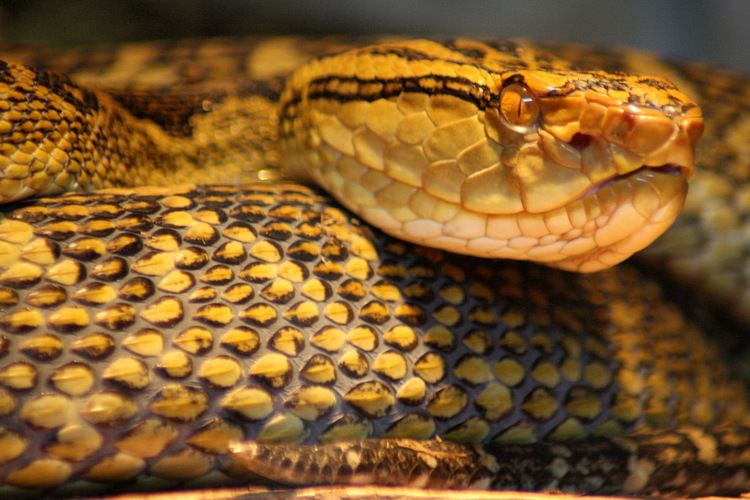 | ||
Similar Snake, Trimeresurus, Protobothrops, Vipers, Trimeresurus mucrosquamatus | ||
Trimeresurus flavoviridis is a venomous pit viper species endemic to the Ryukyu Islands of Japan. No subspecies are currently recognized.
Contents
- Description
- Common names
- Geographic range
- Habitat
- Behavior
- Reproduction
- Predators
- Venom
- Exploitation
- References
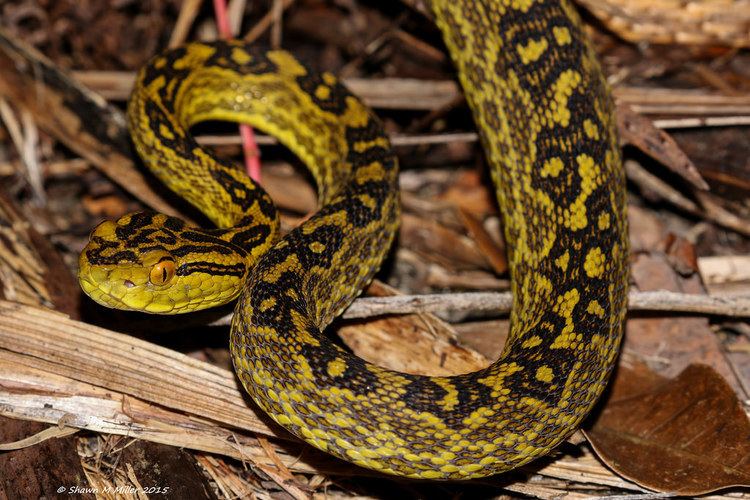
Description
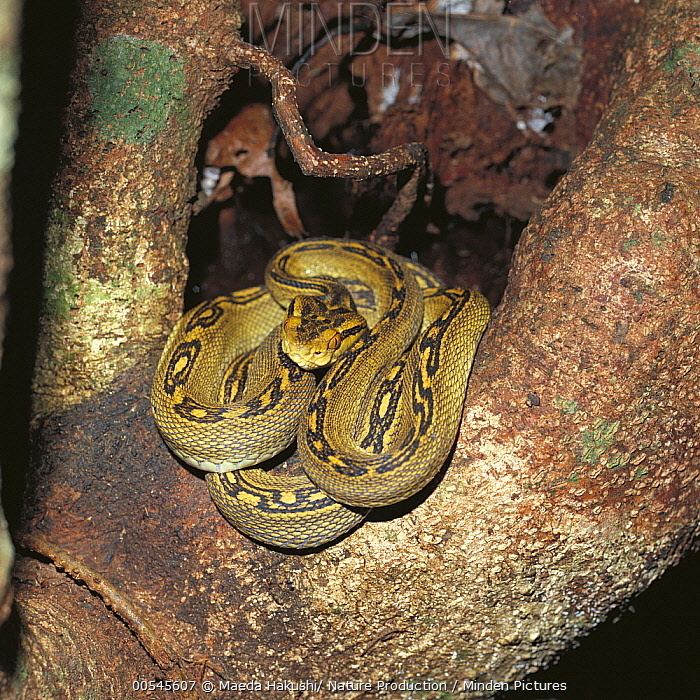
Growing to an average total length of 4–5 feet (122–152 cm), with a maximum total length of 7.9 feet/242 cm (caught in 2011 at Onna, Okinawa), it is the largest member of its genus. It is slenderly built and gracefully proportioned with a large head. The tail, however, is not prehensile.
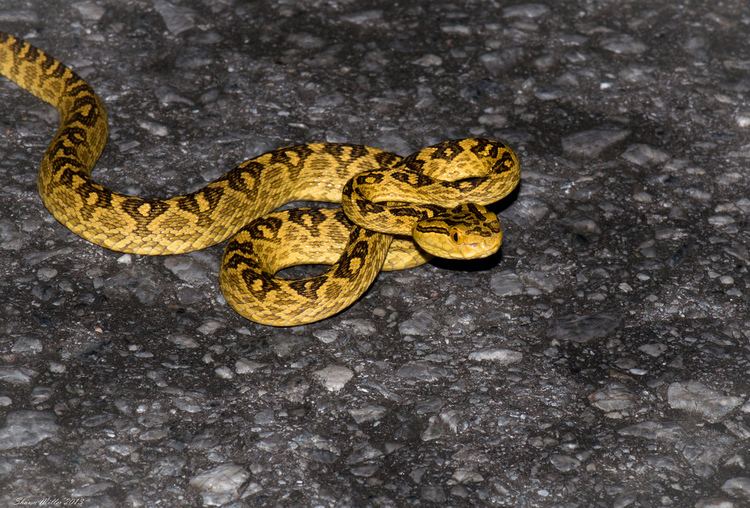
Scalation includes 35 (sometimes 31, 33, 37 or 39) rows of dorsal scales at midbody, 217-239 ventral scales, 72-95 subcaudal scales, and 7-10 supralabial scales. The crown is covered with small scales.
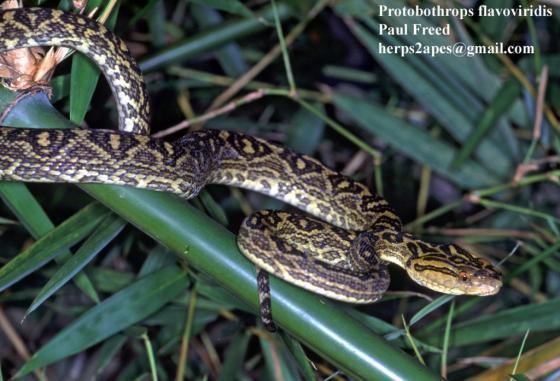
The color pattern consists of a light olive or brown ground color, overlaid with elongated dark green or brownish blotches. The blotches have yellow edges, sometimes contain yellow spots, and frequently fuse to produce wavy stripes. The belly is whitish with dark coloring along the edges.
Common names

Habu (ハブ), Okinawa habu, yellow-green tree viper, Hon habu (ホンハブ), Okinawan habu, Kume Shima habu (for T. f. tinkhami).
Geographic range

Trimeresurus flavoviridis is found in Japan in the Ryukyu Islands, including Okinawa and the Amami Islands. The type locality given is "Amakarima Island (one of the Loo-Choo group)" (= Keramashima, Ryukyu Islands).
It is common on the larger volcanic islands, but not present on the smaller coral islands
Habitat
Often reported in the transition zone between palm forest and cultivated fields. Found on rock walls and in old tombs and caves.
Behavior
Terrestrial and mostly nocturnal, it often enters homes and other structures in search of rats and mice. Bold and irritable, it can strike quickly and has a long reach.
Reproduction
Oviparous, it is one of the few pitvipers that lays eggs. Mating takes place in early spring and up to 18 eggs are laid in mid-summer. The hatchlings, which emerge after an incubation period of 5–6 weeks, are 10 inches (25 cm) in length and look the same as the adults.
Predators
To reduce the population of T. flavoviridis on the island of Okinawa, the small Indian mongoose, Herpestes javanicus, was introduced in 1910. Although the effects of this introduction have not been studied, in other such cases the negative effects on species of native birds, mammals, and herpetofauna have been a source of concern for wildlife managers.
Venom
The incidence of snakebite in the Amami Islands is 2 per 1,000 people, which is very high. The venom of this species is of high toxicity containing cytotoxin and haemorrhagin components, yet the fatality rate is less than 1%. If a bite victim receives medical care promptly, bites are not life-threatening. However, 6-8% do suffer permanent disability.
Brown (1973) gives LD50 values of 3.1, 4.3, 3.7, 2.7, 3.7, 3.8 mg/kg IV, 5.1 mg/kg IP and 6.0, 3.5-5.0, 4.5 mg/kg SC for toxicity.
Exploitation
On the island of Okinawa, this species is heavily collected, primarily for use in habu sake (ハブ酒). (Sake in Japanese can refer to any alcoholic beverage.) In this case, the sake is a liquor called awamori (泡盛), alleged to have medicinal properties. The production includes the snakes in the fermentation process and it is sold in bottles that may or may not contain the body of a snake.
